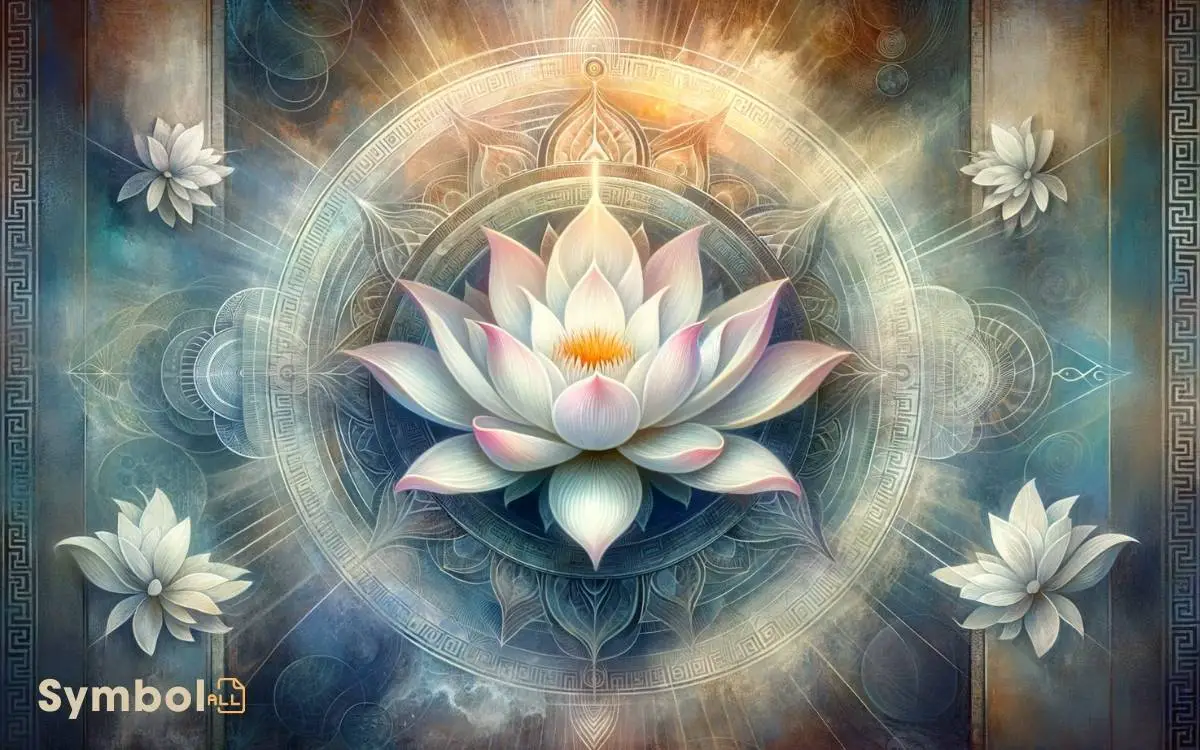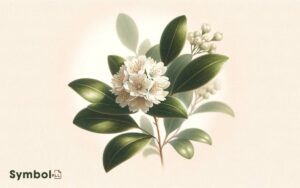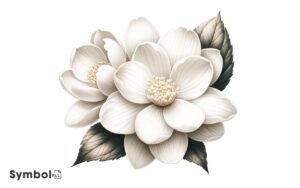Lotus Flower Symbolism in Greek Mythology: Rebirth!
In Greek mythology, you’ll find the lotus flower symbolizes rebirth and enlightenment, showcasing human resilience and a pure spirit. The flower’s dual nature is appreciated, reflecting the bond between the divine and earthly domains.
It’s a metaphor for temptation and forgetfulness, as seen in the tale of Odysseus and the Lotus-Eaters, emphasizing the struggle between temptation and duty. The lotus also signifies purity and innocence, standing as a beacon of untainted beauty amid trials.
Greek art frequently features the lotus, framing mythological scenes and signifying sacred spaces. This rich symbolism invites contemplation of life, renewal, and the soul’s journey, offering a deeper understanding of its enduring legacy.

Key Takeaways
The Enigmatic Lotus
Exploring the enigmatic lotus reveals its profound symbolism in Greek mythology, where it not only captivates with its beauty but also embodies themes of rebirth and enlightenment.
This aquatic plant, thriving in murky waters yet emerging unstained, serves as a powerful metaphor for human resilience and purity of spirit amidst adversity.
In ancient texts, the lotus is often depicted as a divine emblem, signifying the unbreakable bond between the earthly and the celestial. Its cyclic life, from seed to full bloom, mirrors the human journey of growth and self-discovery.
Scholars argue that the lotus’s depiction in Greek artifacts suggests a deep appreciation for its dual nature grounded in the mud, yet aspiring towards the divine, thus offering a nuanced perspective on the balance between mortal and ethereal realms.
Odysseus and the Lotus-Eaters
You’ll find the story of Odysseus and the Lotus-Eaters pivotal in understanding the lotus flower’s symbolism within Greek mythology.
This narrative highlights Odysseus’s encounter with the Lotus-Eaters and elucidates the profound effects of the lotus on his crew, serving as a metaphor for temptation and forgetfulness.
Analyzing this episode offers insights into the ancient Greeks’ perception of desire and memory, framing the lotus as both alluring and perilous.
Odysseus Encounter
In Homer’s *Odyssey*, Odysseus’s encounter with the Lotus-Eaters presents a compelling exploration of the lotus flower’s symbolism, illustrating the challenges of temptation and the quest for knowledge amidst the dangers of forgetfulness.
- Temptation vs. Duty: You’re shown how the lotus seduces Odysseus’s crew, tempting them to abandon their homecoming. This mirrors the struggle between earthly desires and higher aspirations.
- Forgetfulness as Danger: The lotus’s effect symbolizes the peril of losing one’s purpose and past, emphasizing the value of memory and identity.
- Quest for Knowledge: Odysseus’s resistance highlights the pursuit of enlightenment over the comfort of oblivion, underscoring the hero’s commitment to growth and understanding.
- Symbolic Duality: The lotus embodies both beauty and peril, reflecting the complex nature of knowledge and temptation.
Lotus Effects
Delving into the narrative of Odysseus and the Lotus-Eaters, one encounters the transformative effects of the lotus, a plant that not only ensnares the senses but also challenges the very essence of memory and identity.
This mythological depiction serves as a profound metaphor for the seductive allure of forgetfulness and the consequent estrangement from one’s duties and past.
Consuming the lotus flower, Odysseus’s crew loses the desire to return home, illustrating how indulgence in momentary pleasures can lead to a complete detachment from one’s goals and responsibilities.
The story intricately suggests that memory and identity are fundamentally interwoven, asserting that to lose one is to risk the other, thereby emphasizing the importance of vigilance against the forces that may lead to oblivion.
Symbol of Rebirth
One might discover that the lotus flower, within Greek mythology, serves as a potent symbol of rebirth and regeneration.
This symbolism emerges from several key aspects:
- Cyclical Blooming: The lotus flower’s daily cycle of closing at night and reblooming with the sunrise mirrors the concept of rebirth.
- Mythological Narratives: Tales often depict gods and heroes experiencing transformation and renewal, subtly linked to the lotus.
- Seasonal Reappearance: Its perennial nature, disappearing in winter and reemerging in spring, enhances its association with renewal.
- Adaptation and Growth: The lotus’s ability to rise from murky waters into a beautiful bloom symbolizes overcoming adversity through rebirth.
These elements collectively underscore the lotus’s enduring emblematic role in symbolizing not just rebirth, but the resilience and continuity inherent within the cycle of life and renewal in Greek mythology.
Purity and Innocence
Beyond its association with rebirth, the lotus flower also embodies the qualities of purity and innocence within Greek mythology, serving as a beacon of untainted beauty amidst the complexities of divine narratives.
This symbolism is deeply ingrained, as the lotus, emerging pristine from murky waters, reflects an untarnished soul or spirit despite the challenges or corruptions it may face.
You’ll find that in these myths, the lotus often shields or cleanses the characters’ moral essence, highlighting their inherent purity amidst trials.
Such imagery isn’t merely decorative; it conveys the profound belief that purity and innocence, like the lotus, can persist, even flourish, against adversity.
This enduring symbol underscores the value placed on maintaining ethical integrity and innocence in a complex, often morally ambiguous world.
The Lotus in Greek Art
Throughout Greek art, the lotus flower frequently manifests, symbolizing the divine and the ethereal, and intricately weaving the threads of purity and transcendence into the fabric of visual storytelling.
You’ll notice its presence isn’t merely decorative but deeply symbolic, capturing the essence of spiritual elevation and purity.
- Vase Paintings: The lotus appears on kraters and amphorae, often framing mythological scenes, highlighting the connection between the divine and the earthly.
- Sculptures: Carved reliefs on temples and statues use the lotus to signify sacred spaces, marking the boundary between the mortal and the immortal.
- Jewelry: Crafted into necklaces and crowns, the lotus symbolizes purity and divine protection for the wearer.
- Mosaics: Floor mosaics with lotus motifs invite the viewer to contemplate the cycle of life and rebirth, grounding sacred narratives in the physical space of public and private buildings.
Desire and Forgetfulness
You’ll find that in Greek mythology, the lotus flower embodies a dual essence of desire and forgetfulness, particularly through its depiction with nymphs and the story of Odysseus.
The enchanting allure of nymphs, often associated with the lotus, highlights its role in inciting desire, while Odysseus’s encounter underscores its capacity to induce forgetfulness, detaching individuals from their past and duties.
This juxtaposition serves as a potent symbol for the complex interplay between yearning and the loss of memory, inviting a deeper exploration of its implications within mythological narratives.
Nymphs Enchanting Allure
Why do the nymphs, with their enchanting allure, embody both desire and forgetfulness in Greek mythology? The answer lies deeply embedded in their portrayal and mythological roles.
- Symbolism: Nymphs personify nature’s beauty and fertility, evoking a deep-seated desire for the idyllic and untarnished.
- Interactions: Their encounters with gods and mortals often lead to situations where individuals are led astray, symbolizing the loss of memory and self.
- Metaphor: They’re metaphors for life’s distractions that can cause one to forget their purpose and identity.
- Duality: Their dual nature reflects the human condition, where the pursuit of beauty and pleasure can lead to a forgetfulness of one’s duties and past.
This intricate symbolism demonstrates how nymphs represent both desire and the peril of losing oneself in that very desire.
Odysseus Memory Loss
Building on the theme of desire and forgetfulness, Odysseus’ memory loss serves as a poignant example of how these elements are woven into Greek mythology’s exploration of human nature.
When Odysseus and his men land on the island of the Lotus-eaters, they encounter a plant that, once consumed, induces a state of blissful amnesia.
This narrative segment underscores the peril inherent in succumbing to temptation, illustrating how desire can lead to a loss of purpose and self-awareness.
The lotus flower symbolizes the allure of oblivion, a seductive escape from reality that ultimately threatens one’s connection to home and duty.
Through Odysseus’ ordeal, the myth conveys a profound message about the human condition: the eternal struggle between the longing for ephemeral pleasures and the pursuit of meaningful existence.
Connections to the Gods
In Greek mythology, the lotus flower serves as a significant symbol connecting mortals to the gods, often representing a bridge between earthly desires and divine domains. In Greek mythology, the lotus flower serves as a significant symbol connecting mortals to the gods, often representing a bridge between earthly desires and divine domains. It was believed that those who consumed the lotus would enter a state of blissful forgetfulness, distancing themselves from worldly concerns and drawing closer to divine tranquility. As a flower symbolizing good luck, the lotus also embodies renewal and spiritual awakening, making it a recurring motif in stories of transformation and enlightenment.
This connection manifests through various narratives and deific associations, highlighting the lotus’s multifaceted symbolism.
- Purity and Rebirth: For deities like Hera, the lotus symbolizes purity and rebirth, underscoring themes of immortality and divine renewal.
- Spiritual Enlightenment: Athena’s association with the lotus emphasizes wisdom and enlightenment, bridging human intellect with divine insight.
- Change and Afterlife: Persephone’s link to the lotus flower underscores themes of change, especially between life and death, reflecting the cycle of seasons and the soul’s journey.
- Fertility and Creation: Associated with Aphrodite, the lotus represents fertility, beauty, and creation, embodying the generative powers of the gods.
Legacy in Modern Culture
The legacy of the lotus flower in modern culture continues to embody themes of spiritual awakening and renewal, reflecting its ancient symbolism in Greek mythology.
You’ll find its image pervading contemporary spiritual movements, where it’s often associated with enlightenment and the journey of the soul.
This flower’s resilience, emerging pristine from murky waters, has become a powerful metaphor for personal growth and purity overcoming adversity in literature, art, and mindfulness practices.
Its depiction in media often carries layers of meaning, subtly hinting at a connection to the divine or the transcendental.
Additionally, in therapeutic contexts, the lotus symbolizes the potential for recovery and rebirth, mirroring its mythological roots in tales of transformation and divine protection.
Its ancient legacy profoundly influences modern interpretations, enriching cultural narratives with its enduring symbolism.
Conclusion
To sum up, it’s intriguing how the lotus, symbolizing rebirth and purity, seamlessly weaves through Greek mythology, art, and modern culture.
Coincidentally, its representation of desire and forgetfulness mirrors our own contemporary struggles with distraction and the quest for clarity.
This duality underscores the lotus’s enduring legacy, connecting ancient wisdom with today’s search for meaning. Therefore, the lotus flower not only enriches our understanding of Greek myths but also offers profound insights into the human condition.






